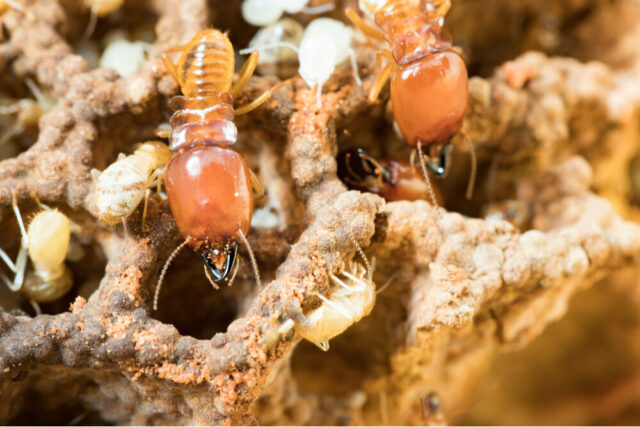
Termite prevention is crucial for maintaining the structural integrity and value of your property.
Today, I want to share with you how to choose the method that will help you achieve just that.
Types of Termite Prevention Methods
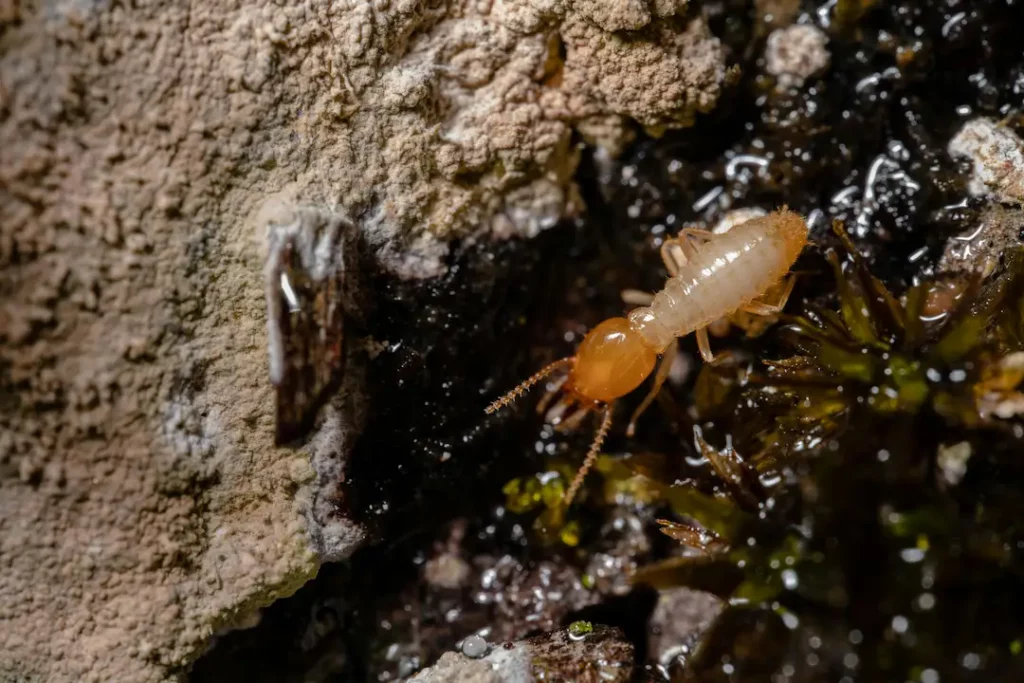
First, let us take a look at the different methods of prevention.
Chemical Barriers
Chemical barriers are one of the most commonly used termite prevention methods. This approach involves applying liquid pesticides, known as termiticides, into the soil around a building’s foundation.
The chemical creates a barrier that termites cannot cross without being killed. These termiticides can be applied during the pre-construction or post-construction phases.
The effectiveness of chemical barriers is generally high, providing immediate protection against termite incursions. If your home does get infested, termite tenting is the way to go especially if it is a heavy infestation.
The success largely depends on proper application and soil conditions. Misapplication or disturbed soil can compromise the barrier, allowing termites to bypass the treated zone.
Pros:
- Cost-effective: Compared to some other methods, chemical barriers can be relatively inexpensive.
- Physical protection: Creates a clear barrier that termites cannot cross.
- Fast-acting: Provides immediate defense against termite invasions.
Cons:
- Invasive installation: Requires drilling and trenching around the property, which can be disruptive.
- Not suitable for all situations: Some types of soil or construction might limit the effectiveness or application of chemical barriers.
Overall, chemical barriers offer a reliable and quick solution for termite prevention but require careful application and maintenance to ensure long-term efficacy.
Termite Baiting Systems
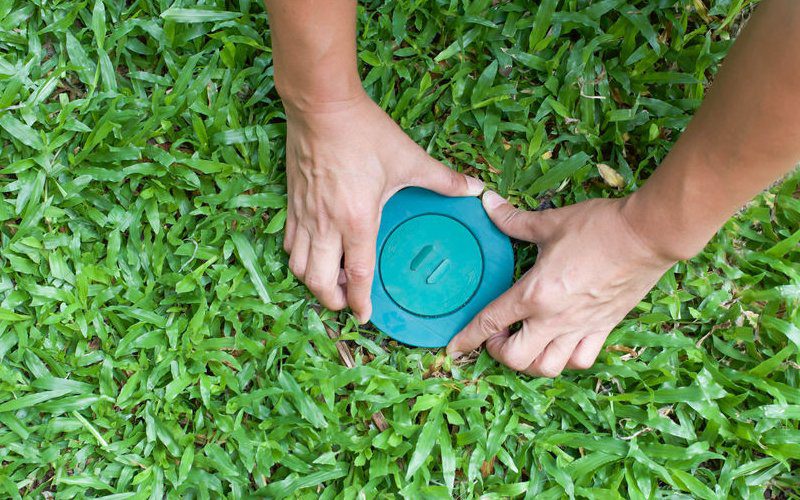
Termite baiting systems involve placing bait stations around the perimeter of a building.
These stations contain wood or other cellulose material treated with a slow-acting insecticide. Termites feed on the bait and carry it back to the colony, eventually leading to the colony’s elimination.
The effectiveness of baiting systems is high, especially in targeting the entire termite colony. However, it can take several months to achieve complete colony elimination, making it a slower solution compared to chemical barriers.
Pros:
- Eco-friendly: Uses minimal chemicals and is safer for the environment.
- Safe for family and pets: The bait is contained within stations, reducing exposure to humans and animals.
- Total colony elimination: Targets the entire termite colony, not just the individual termites.
Cons:
- Time-consuming: It may take several months to see results.
- Costly maintenance: Requires regular monitoring and replacement of bait stations.
- No physical protection: Does not create a physical barrier to prevent termites from entering a property.
Termite baiting systems are ideal for those seeking an environmentally friendly and comprehensive solution, though patience and ongoing maintenance are required.
Fumigation
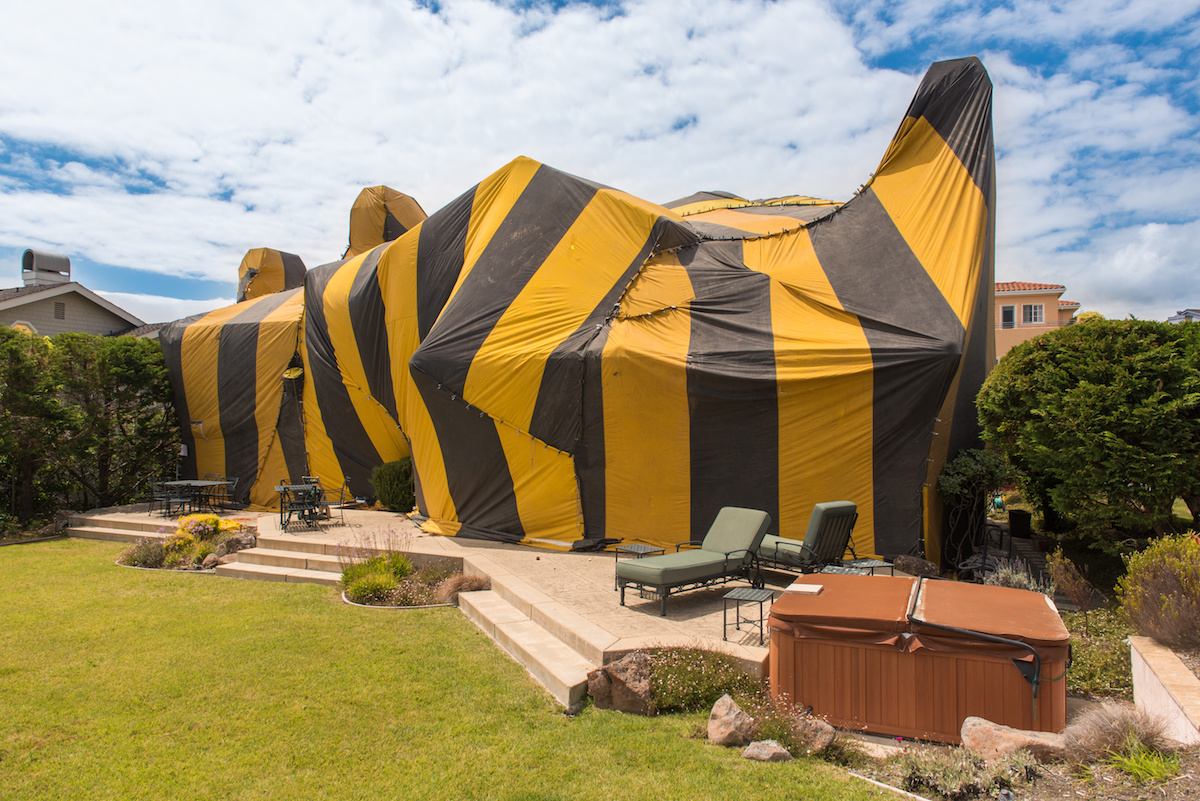
Fumigation involves sealing a building and introducing a gas that penetrates all areas, killing termites. This method is often used for severe infestations or when other methods have failed.
The effectiveness of fumigation is very high, providing comprehensive elimination of termites within the treated area. However, it does not offer long-term prevention, meaning termites can re-infest the property if no other measures are taken.
Pros:
- Comprehensive elimination: Kills termites throughout the entire structure.
- Fast results: The process usually takes a few days to complete.
Cons:
- Disruptive: Requires vacating the property and removing plants and food items.
- Expensive: Typically more costly than other methods due to the labor and materials involved.
- No long-term prevention: Once the gas dissipates, the property is vulnerable to re-infestation.
Fumigation is a powerful tool for severe termite problems but should be followed by other preventive measures to ensure long-term protection.
Natural Remedies

Natural remedies for termite prevention include using substances like orange oil, neem oil, and boric acid. These methods are often preferred by those looking for environmentally friendly and non-toxic options.
The effectiveness of natural remedies varies. While they can be useful for small infestations or as a preventive measure, they may not be as reliable as chemical treatments or baiting systems for severe infestations.
Pros:
- Environmentally friendly: No harsh chemicals are used.
- Safe for humans and pets: Non-toxic and safe to use around the home.
Cons:
- Slower results: Natural remedies often take longer to see results.
- Less consistent effectiveness: The success of natural methods can vary greatly.
Natural remedies are a good option for those looking for green solutions, but they may need to be combined with other methods for more serious termite problems.
Physical Barriers
Physical barriers, such as stainless steel mesh and sand barriers, are installed during the construction of a building to prevent termites from entering. These barriers create a physical obstacle that termites cannot penetrate.
The effectiveness of physical barriers is very high, providing long-lasting protection as long as they remain intact. However, their installation can be expensive and may not be suitable for all types of construction.
Pros:
- Long-lasting: Provides permanent protection if properly installed.
- Minimal maintenance: Requires little to no maintenance after installation.
- Environmentally friendly: No chemicals are used.
Cons:
- Initial installation cost: Can be expensive to install, especially for existing buildings.
- Suitability varies: Not all building types can accommodate physical barriers.
Physical barriers are an excellent long-term solution for termite prevention, particularly for new constructions.
Comparison of Methods
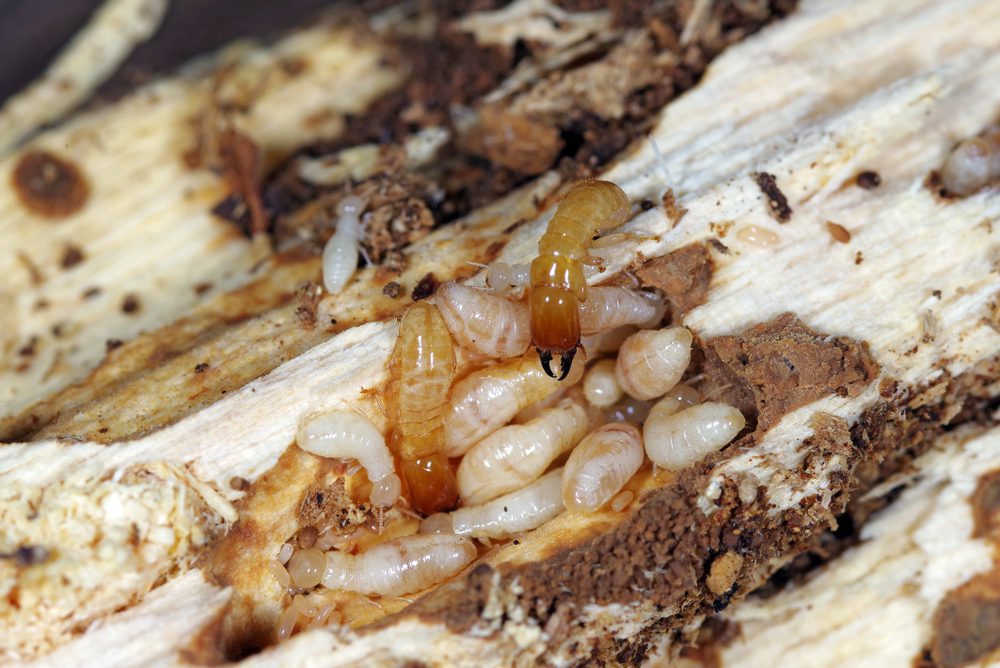
When comparing termite prevention methods, it is important to consider several factors:
Effectiveness in Different Situations:
- Severe infestations: Fumigation and chemical barriers are highly effective.
- New constructions: Physical barriers provide long-term protection.
- Eco-friendly options: Termite baiting systems and natural remedies are preferable.
Chemical barriers and fumigation can have high initial costs but offer quick results. Baiting systems and physical barriers may be more costly over time due to maintenance and installation.
Impact on the Environment and Household Safety:
- Baiting systems and natural remedies are environmentally friendly.
- Chemical barriers and fumigation involve the use of pesticides, which may have environmental and safety concerns.
Speed of Results and Long-Term Effectiveness:
- Fumigation offers fast, comprehensive elimination but lacks long-term prevention.
- Chemical barriers provide immediate protection but require maintenance.
- Baiting systems and physical barriers offer slower results but can provide long-term protection.
Integrated Pest Management (IPM) Approach
Integrated Pest Management (IPM) is a comprehensive approach that combines multiple methods to achieve optimal termite prevention.
This strategy involves regular inspections, monitoring, and using a combination of chemical, physical, and biological methods tailored to specific situations.
Benefits of IPM:
- Reduces reliance on chemicals, promoting safer and more sustainable pest management.
- Provides a holistic solution by addressing all aspects of termite prevention.
- Can be customized to fit the unique needs of each property.
- Adopting an IPM approach ensures thorough and long-lasting termite control, combining the strengths of various methods while mitigating their individual weaknesses.
The Bottom Line
Termite prevention is essential for protecting your property. By understanding and comparing different methods, homeowners can choose the most effective solution for their needs. Regular inspections and maintenance are crucial for long-term termite control.












